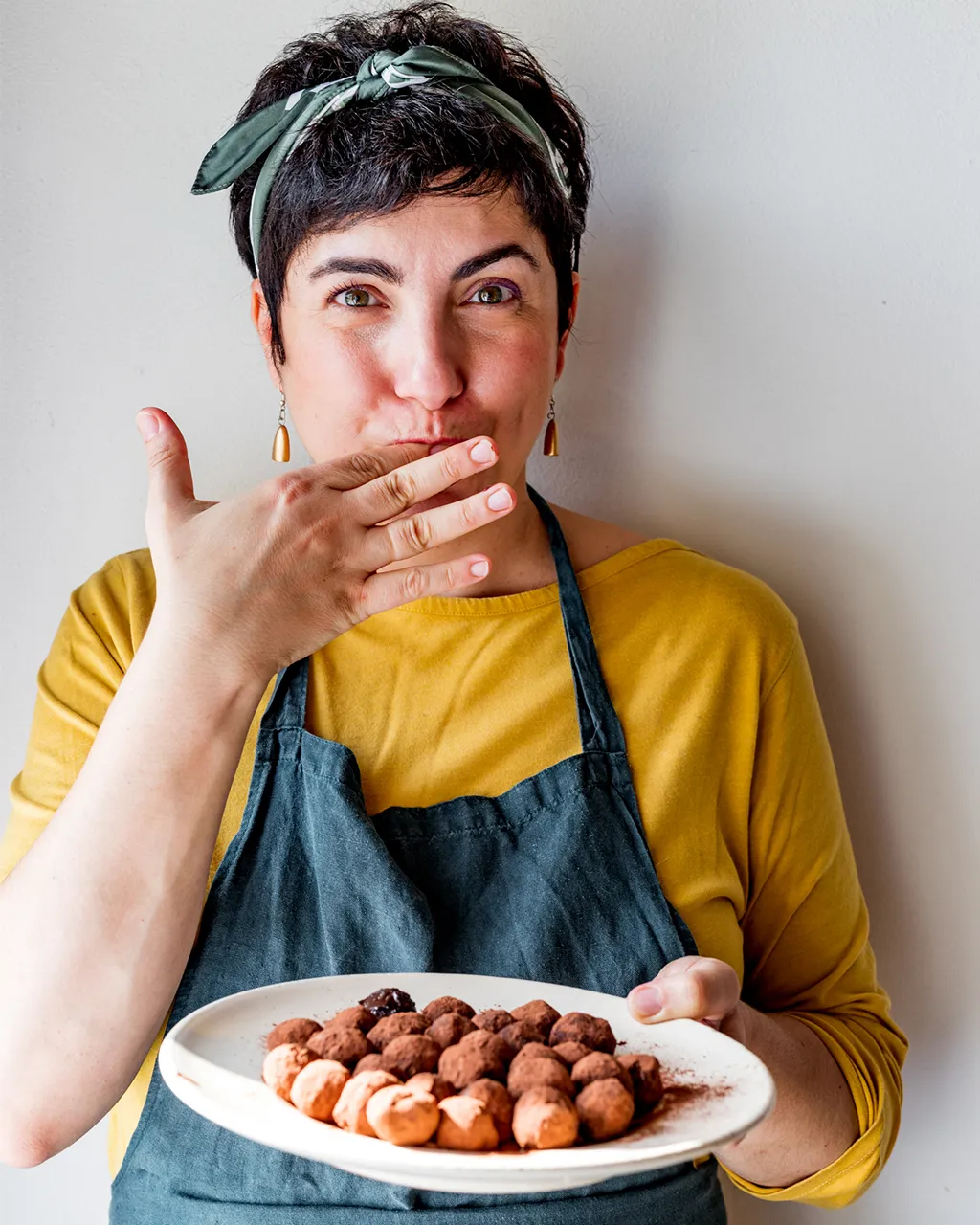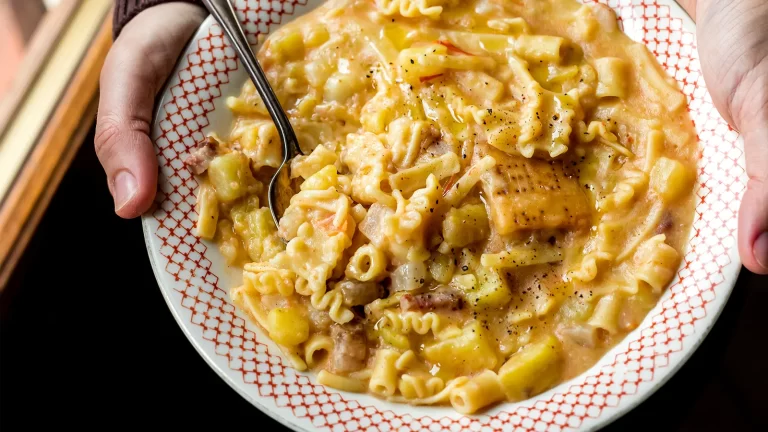Literally meaning “poor kitchen”, cucina povera is a traditional style of Italian cooking that embraces a frugal, no-waste philosophy. Created out of necessity, cucina povera is considered poor in terms of cost, but never poor in flavour; uncomplicated, but by no means unremarkable.
With a long, rich history deeply ingrained in Italian culture and the daily life of many families, the dishes of cucina povera have provided nourishment for centuries. Its exact origins aren't particularly clear, but food historians suggest that cucina povera is rooted in the countryside traditions of “peasant cooking”, dating back long before Italy was unified in 1870, first concocted for manual labourers in need of affordable sustenance. As such, cucina povera dishes make great use of humble, inexpensive ingredients or leftovers. Think small animals such as rabbit and poultry – all simple to hunt – or less popular offal cuts from pigs and cattle, plus beans, legumes and plenty of carbohydrates like pasta, potatoes and bread.
Some of Italy's most beloved dishes were born from cucina povera. Dishes like panzanella and ribollita made use of leftover bread. Pasta, another frugal ingredient, was behind classics like cacio e pepe, pasta puttanesca and carbonara. One standout dish, pasta e patate (pasta and potatoes), combines two affordable ingredients in a soupy, delicious manner that is still enjoyed today.
“Cucina povera is the way we've been cooking in my family since I can remember,” explained Giulia Scarpaleggia, a Tuscan food writer, author and cooking class teacher. Scarpaleggia launched her cooking blog, Juls' Kitchen in 2009, borne from a deeply rooted passion for simple, traditional Tuscan food. She has since gone on to host cooking classes and a podcast called Cooking with an Italian Accent. In April 2023, she published a new cookbook, Cucina Povera: The Italian Way of Transforming Humble Ingredients into Unforgettable Meals.
“I wanted it to be a comprehensive book on the Italian cucina povera tradition,” said Scarpaleggia. “There had to be weeknight meal ideas, something you could quickly stir together with pantry ingredients; seasonal recipes, where the freshness of the produce could shine through simple preparations; and celebratory dishes, designed to feed small crowds and exalt the Italian joy of conviviality”.
Pasta e patate is one of the book's tastiest recipes, layering carb upon carb, cemented with soft melted cheese. Simply, it is comfort food at its best.
“My grandma Marcella learned to cook pasta with potatoes from my Aunt Valeria, who was from Basilicata, in the south of Italy,” Scarpaleggia explained. “From that day of many, many years ago, she developed her own recipe, revised according to our ingredients, to her personal taste and cooking style. For example, instead of caciocavallo, a hard and sharp-flavoured, pear-shaped cheese from the south of Italy, we use grated Parmigiano Reggiano and also the leftover crusts of Parmigiano, cut into cubes. Once you boil them for a while, they become soft and chewy, giving an intense flavour to the broth”.
Throughout Italy, many versions of pasta e patate exist with varying ingredients and cooking methods, and while Scarpaleggia has fond memories of her grandmother's recipe, the book's pasta e patate recipe is more in line with the traditional version from Naples.
“The Neapolitan version, neither a soup nor a simple plate of pasta, is usually described as azzeccata, dense, creamy and well mixed, thanks to the stringy melted provolone cheese that binds it all together,” explained Scarpaleggia. “A key ingredient is a Parmigiano Reggiano rind that cooks with the pasta and potatoes, adding depth of flavour to the dish”.

Scarpaleggi's recipe starts with a foundation of onion, celery and garlic, which are softened in extra virgin olive oil. White potatoes and pancetta are added, followed by water, tomatoes and a Parmigiano Reggiano rind. Scarpaleggia suggests cooking the potatoes until perfectly soft, checking their doneness by mashing the potatoes against the sides of the pot with a wooden spoon. If the potatoes can easily be mashed, they're done.
The next stage is adding pasta mista. This mixture of pasta shapes is an exemplary example of cucina povera, originating in Naples as a blend of leftover pasta cuts from factories to prevent any waste. Once the pasta mista is al dente, both grated and cubed provolone cheese are stirred in until melted and creamy.
“I used to prepare pasta e patate as my grandmother would do, until I tried the Neapolitan version,” said Scarpaleggia. “We were sitting in this little, crowded, loud eatery in a neighbourhood market with some friends when I spotted pasta e patate on the menu. I had to have it, especially because it was made with provola [provolone], a delicious local cheese. That literally changed my life, it was comfort on a plate!”
Method
- Step 1
Pour the olive oil into a large pot set over low heat. Add the onion, celery, garlic and a generous pinch of salt, and cook, stirring occasionally, until the vegetables are soft (about 10 minutes). - Step 2
Add the potatoes and pancetta, stir, and cook for about 5 minutes, taking care not to brown the potatoes. Pour in 500ml/2 cups of the hot water (it should be enough to cover the potatoes), add the tomatoes and Parmigiano-Reggiano rind, and cook over medium heat for about 25 minutes, stirring occasionally, until you can easily mash the potatoes against the sides of the pot with a wooden spoon. - Step 3
Pour in the remaining 480ml/2 cups of hot water, add the pasta, and stir thoroughly. Bring to a simmer and cook until the soup has thickened and the pasta is al dente (about 10 minutes). - Step 4
Remove the pot from the heat, add both cheeses and stir energetically to melt them. Taste and adjust the seasoning with additional salt and with pepper. - Step 5
Ladle the soup into warmed bowls, drizzle with olive oil, sprinkle with pepper and serve. The Parmigiano-Reggiano rind can be cut into small pieces and added to the bowls. Any leftover soup can be refrigerated for up to 2 days. Reheat gently over low heat, adding a bit of water as necessary to thin.
Tip
Today pasta mista is popular in many dishes and can even be bought, but a mixture of pasta shapes can also be used.
— CutC by bbc.com


